|
|

|
|
|
|
Horseback riding vacations in
Italy
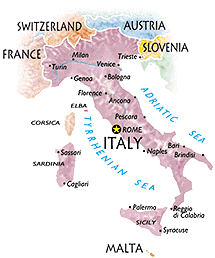 Hidden Trails’ Italian horse riding holidays are a time to indulge, relax, and lap up the essence of Italia. We have brought together some of Italy’s finest horse riding tours, each with their own uniquely Italian feel. Whether you are lured by the rich history stretching back to the ancient Roman empire, the long established culinary traditions, or simply the romanticism of a Mediterranean escape, Hidden Trails has a horseback vacation to suit. Hidden Trails’ Italian horse riding holidays are a time to indulge, relax, and lap up the essence of Italia. We have brought together some of Italy’s finest horse riding tours, each with their own uniquely Italian feel. Whether you are lured by the rich history stretching back to the ancient Roman empire, the long established culinary traditions, or simply the romanticism of a Mediterranean escape, Hidden Trails has a horseback vacation to suit.
Horse Riding in Italy
Italy is characterized by its style, exquisite countryside, long-held traditions, rich cultural heritage and cuisine. Our Italian horse rides aim to capture the essence of Italy – explore the vineyards and cellars of Tuscany, the mountains of Molise and the volcanic landscapes of Sicily. On our Italian rides you will find yourself riding through centuries old olive groves, eating locally grown fresh produce, and meeting locals with a deep love for their country.
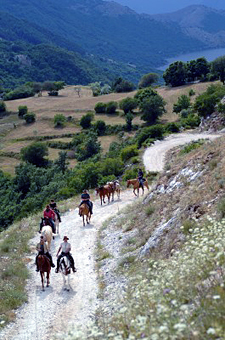 Tuscany is a famed culinary region, and our finest tours combine excellent horse riding with the best gourmet Italian food and wine. On many of our tours you will stay in rustic farm houses, where you can dine on fresh pasta, fine goat cheeses, and local wine. Tuscany is a famed culinary region, and our finest tours combine excellent horse riding with the best gourmet Italian food and wine. On many of our tours you will stay in rustic farm houses, where you can dine on fresh pasta, fine goat cheeses, and local wine.
Those wishing to explore the island of Sicily will find our Cefalu to Etna Ride a particularly interesting option. Mt Etna is Europe’s highest active volcano, and here the horse treks follow ancient Roman paths and the luna-like trails of past eruptions.
With so much to offer, exploring this beautiful country on horseback is the perfect way to discover Italy’s hidden jewels. Our Italian horseback vacations combine excellent equitation with history, culture and fine cuisine.
Italy Geography and Climate
The weather in Rome and central Italy during summer can exceed temperatures of 35ºC – making it sometimes unbearably hot. As such many businesses tend to close in August, as people take holidays in cooler climates. The best time to travel to Rome is in springtime, when skies are blue and the weather warm. Rain showers are possible any time of year. Mid-winter is mild, with the average temperature around 13 ºC.
In the northern regions of the country summer temperatures fluctuate, depending on location. Generally Venice ranges in temperature from 30 - 33 ºC; whilst Milan can often exceed 35 ºC. Tuscany has a relatively mild climate – ranging between 20 and 27 ºC in summer.
Southern Italy and Naples are often cooler in the summer, due to the Mediterranean climate. Southern Italy experiences sunnier, drier weather, and slightly milder temperatures ranging from 18 ºC to 29 ºC on average.
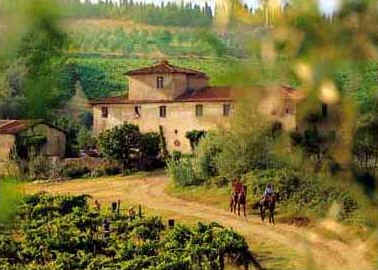
Horseback riding in Tuscany - Italy
Explore more European Horse Riding Vacations
|
|
Holidays on horseback in Italy
See Mini Country Guide
|
Below is a list of our trips in this area with video clips.
 Click on the 'watch video' icon

to view a video clip,
Siena Palio Horse Race

|
Set in an 18th century Tuscan farmhouse in Chianti. Meadows, woods and beautiful gardens with a views of a medieval castle surround the equestrian centre.
|

Trip Details
|
|
Italy
Travel restrictions
English-language guidance on current entry and exit requirements is maintained on the following Ministry of Foreign Affairs website: https://www.esteri.it/mae/en/ministero/normativaonline/decreto-iorestoacasa-domande-frequenti/focus-cittadini-italiani-in-rientro-dall-estero-e-cittadini-stranieri-in-italia.html
Starting from June 1st 2022, travelers to Italy will no longer be required to show the Green pass (i.e. Anti-COVID 19 vaccination certificate or recovery certificate, or a negative swab test) to enter Italy and are not subject to quarantine upon arrival to Italy if they do not possess the Green pass.
COVID-19 restrictive measures for arrivals from abroad are no longer in force.
Measures taken by government
As of October 1st 2022, it is no longer mandatory to wear a face mask on public transportation, but its use in all indoor environments and in all cases of crowded outdoor events is highly recommended.
Effective from May 1st 2022, it is no longer mandatory to show a Green Pass to access businesses and services in Italy.
You can see more restrictions for each region at the following link: https://www.italia.it/en/covid19
Testing
PCR and/or antigen tests are available from pharmacies (antigen tests) or labs (PCR tests) and are readily available within 48 hours.
Please note the response times vary by testing location, the type of test taken, and the method of retrieving test results which can be in-person or via correspondence.
At present in Italy, antigen tests cost approximately 22 euros, while PCR tests cost approximately 70 euros.
Emergency number (related to COVID-19) while visiting the country
Call Italy’s 112 emergency number or 1500 if you believe you have symptoms and are currently in Italy. English speaking operators are available.
Source:
US Embassy in Italy https://it.usembassy.gov/covid-19-information/
Published on March 30th 2023 (checked on April 5th 2023)
For more information please visit our COVID-19 Updates page at https://www.hiddentrails.com/article/covid19update.aspx
|
|
Italy
At A glance
Capital City: Rome
Land size: 294,140 sq km
Population: 61,095,551 (2022 est.)
Official language: Italian
Currency: Euro (€ / EUR)
UNESCO properties and sites:
- Sacri Monti of Piedmont and Lombardy
- 18th-Century Royal Palace at Caserta with the Park, the Aqueduct of Vanvitelli, and the San Leucio Complex
- Arab-Norman Palermo and the Cathedral Churches of Cefalú and Monreale
- Archaeological Area and the Patriarchal Basilica of Aquileia
- Archaeological Area of Agrigento
- Archaeological Areas of Pompei, Herculaneum and Torre Annunziata
- Assisi, the Basilica of San Francesco and Other Franciscan Sites
- Botanical Garden (Orto Botanico), Padua
- Castel del Monte
- Cathedral, Torre Civica and Piazza Grande, Modena
- Church and Dominican Convent of Santa Maria delle Grazie with “The Last Supper” by Leonardo da Vinci
- Cilento and Vallo di Diano National Park with the Archeological Sites of Paestum and Velia, and the Certosa di Padula
- City of Verona
- City of Vicenza and the Palladian Villas of the Veneto
- Costiera Amalfitana
- Crespi d'Adda
- Early Christian Monuments of Ravenna
- Etruscan Necropolises of Cerveteri and Tarquinia
- Ferrara, City of the Renaissance, and its Po Delta
- Genoa: Le Strade Nuove and the system of the Palazzi dei Rolli
- Historic Centre of Florence
- Historic Centre of Naples
- Historic Centre of Rome, the Properties of the Holy See in that City Enjoying Extraterritorial Rights and San Paolo Fuori le Mura
- Historic Centre of San Gimignano
- Historic Centre of Siena
- Historic Centre of the City of Pienza
- Historic Centre of Urbino
- Ivrea, industrial city of the 20th century
- Late Baroque Towns of the Val di Noto (South-Eastern Sicily)
- Le Colline del Prosecco di Conegliano e Valdobbiadene
- Longobards in Italy. Places of the Power (568-774 A.D.)
- Mantua and Sabbioneta
- Medici Villas and Gardens in Tuscany
- Padua’s fourteenth-century fresco cycles
- Piazza del Duomo, Pisa
- Portovenere, Cinque Terre, and the Islands (Palmaria, Tino and Tinetto)
- Prehistoric Pile Dwellings around the Alps
- Residences of the Royal House of Savoy
- Rhaetian Railway in the Albula / Bernina Landscapes
- Rock Drawings in Valcamonica
- Su Nuraxi di Barumini
- Syracuse and the Rocky Necropolis of Pantalica
- The Trulli of Alberobello
- The Great Spa Towns of Europe
- The Porticoes of Bologna
- The Sassi and the Park of the Rupestrian Churches of Matera
- Val d'Orcia
- Venetian Works of Defence between the 16th and 17th Centuries: Stato da Terra – Western Stato da Mar
- Venice and its Lagoon
- Villa Adriana (Tivoli)
- Villa d'Este, Tivoli
- Villa Romana del Casale
- Vineyard Landscape of Piedmont: Langhe-Roero and Monferrato
- Ancient and Primeval Beech Forests of the Carpathians and Other Regions of Europe
- Isole Eolie (Aeolian Islands)
- Monte San Giorgio
- Mount Etna
- The Dolomites
Source: https://www.cia.gov/the-world-factbook/countries/italy/
Get ready to be captivated by the charm of Italy, a country that will leave you with a deep appreciation for its art, cuisine, and dolce vita. Discover the romantic charm of Florence, where Renaissance masterpieces and picturesque architecture enchant at every turn. Traverse the enchanting canals of Venice, where gondolas glide gracefully under charming bridges and grand palazzos.
Italy's historical landmarks, breathtaking coastlines, and vibrant culture offer a truly unique travel experience.
Immerse yourself in the rich cultural heritage of Italy, experiencing its equestrian traditions and savoring delicious regional cuisine. Ride through the idyllic landscapes of Tuscany, where rolling hills, vineyards, and cypress-lined avenues create a perfect setting for horseback riding adventures. Traverse the rolling hills of Umbria, riding through scenic landscapes dotted with medieval towns and picturesque castles.
Whether you're an experienced rider or a beginner looking to improve your skills, Italy is waiting for you.
Brief History
Italy became a nation-state in 1861 when the regional states of the peninsula, along with Sardinia and Sicily, were united under King Victor EMMANUEL II. An era of parliamentary government came to a close in the early 1920s when Benito MUSSOLINI established a Fascist dictatorship. His alliance with Nazi Germany led to Italy's defeat in World War II.
A democratic republic replaced the monarchy in 1946 and economic revival followed. Italy is a charter member of NATO and the European Economic Community (EEC) and its subsequent successors the EC and the EU. It has been at the forefront of European economic and political unification, joining the Economic and Monetary Union in 1999.
Source: https://www.cia.gov/the-world-factbook/countries/italy/
Cultural Insights
Food is a means for establishing and maintaining ties among family and friends. No one who enters an Italian home should fail to receive an offering of food and drink.
There are regional differences in what is eaten and how food is prepared. In general, more veal is found in the north, where meals tend to be lighter. Southern cooking has the reputation of being heavier and more substantial than northern cooking.
Italians generally are effusive in their public behavior. There is a great deal of public embracing and kissing upon greeting people. It is also polite to sit close to people and to interact by lightly touching people on the arms. Italian gazes are intense. It is felt that someone who cannot look you in the eyes is trying to hide something.
Elders expect and get respect. They enter a room first. Men stand for women and youngsters for adults.
Italians have little respect for lines and generally push their way to the front.
Source: https://www.everyculture.com/Ge-It/Italy.html
Transportation
By Air
Italy has about forty airports distributed throughout the country, providing a dense network of national, international and intercontinental flights.
The main entry hubs are the intercontinental and international arrival points of Italy: "Leonardo da Vinci" Rome Fiumicino Airport and Milan Malpensa Airport, yet almost all Italian airports operate international connections.
The offering of flights by the main carriers and low-cost airlines is very broad and covers a large number of destinations. Italy is connected by air with most European nations and all continents. Visit the websites of the main airlines to obtain more information about routes, timetables, prices and availability.
By Rail
You can take advantage of EuroCity trains to travel to Italy easily. These international convoys connect various European cities and offer a wide choice of timetables and routes.
For example: Geneva, Marseilles, Innsbruck or Munich all have direct connections with Venice, Bologna, Verona or Milan.
If you prefer to travel at night, the equivalent service is offered by EuroNight trains, thereby enabling you to sleep for the duration of the journey.
Naturally, in addition to using these lines, you can also arrive in Italy thanks to the complex European railway network connecting Italian cities to other capitals.
Source: https://www.italia.it/en/practical-information/entering-italy
Money
Airports and large stations usually have banks and exchange agencies for withdrawals or related services. Banks (with 24-hour ATMs) are located all over the country; you can exchange/buy traveller's checks (in dollars or euros) through banks.
Source: https://www.italia.it/en/practical-information/general-information
Health
For emergency services in Italy, dial 112.
Ambulance services are widely available, but training and availability of emergency responders may be below U.S. standards.
Medical facilities are available but may be limited outside urban areas. Public hospitals may not maintain the same standards as hospitals in the United States. It is not possible to obtain an itemized hospital bill from public hospitals, as required by many U.S. insurance companies, because the Italian National Health Service charges one inclusive rate for care services and room and board. Private hospitals require you to pay for all services up front and get reimbursed later from your insurance company.
The Italian Ministry of Health sets rules defining who and how prescriptions and medications can be imported into Italy. However, the Ministry of Health website does not have information in English. According to the Ministry of Health, foreigners entering Italy are allowed to bring personal medications for a period of 30 days, but it is recommended that travelers also bring a copy of their prescription with them. Travelers should not bring excess supplies of prescription drugs into the country and cannot bring prescription drugs for other people.
The import of medications into Italy by courier services or by mail is strictly regulated by Italian Customs laws. Italian customs clears all incoming shipments of medications, even small amounts for personal use. The receiving party must be able to provide a statement signed by a physician licensed in Italy, certifying the medication is essential for the patient, that he/she would be put in a life-threatening situation without it AND that there is no substitute or equivalent medication available on the Italian market.
Exercise caution when purchasing medication overseas. Pharmaceuticals, both over the counter and requiring prescription in the United States, are often readily available for purchase with minimal controls. Medication should be purchased in consultation with a medical professional and from reputable establishments.
Source: https://travel.state.gov/content/travel/en/international-travel/International-Travel-Country-Information-Pages/Italy.html
Electricity
Italy operates on a 230V supply voltage and uses type C, F and L plugs.
The Type C electrical plug (or Europlug) is a two-wire plug that has two round pins. It fits into any socket that accepts 4.0 – 4.8 mm round contacts on 19 mm centres. They are being replaced by E, F, J, K or N sockets which work perfectly with Type C plugs.
The Type F electrical plug (also known as a Schuko plug) has two 4.8 mm round pins spaced 19 mm apart. It is similar to the Type E plug but has two earth clips on the side rather than a female earth contact. The CEE 7/7 plug was developed to work with sockets E and F and has grounding clips on both sides (to work with Type F sockets) and a female contact (to accept the grounding pin of the type E socket).
There are two variations of the Type L plug, one rated at 10 amps, and one at 16 amps. The 10 amp version has two round pins that are 4 mm thick and spaced 5.5 mm apart, with a grounding pin in the middle. The 16 amp version has two round pins that are 5 mm thick, spaced 8mm apart, as well as a grounding pin. Italy has a kind of “universal” socket that comprises a “schuko” socket for C, E, F and L plugs and a “bipasso” socket for L and C plugs.
Source: https://www.iec.ch/world-plugs
Communication
Time zone in Italy: Central European Time (GMT +1)
International country code – 39
Italy’s large telecom market has one of the most progressive fiber sectors in Europe, with regulatory measures encouraging network sharing.
Italy’s vibrant mobile market has one of the highest subscription rates in Europe, though the number of subscribers has fallen in recent years as customers respond to attractive off-net pricing which has reduced the financial benefit of having SIM cards from different providers.
Italian network companies were among the first in Europe to trial services based on 5G.
Source: https://www.cia.gov/the-world-factbook/countries/italy/
Phrasebook
| English |
Italian |
| Hello! |
Ciao |
| Goodbye |
Arrivederci |
| Good morning |
Buongiorno |
| Good evening |
Buonasera |
| Good night |
Buonanotte |
| Please |
Per favore |
| Thank you |
Grazie |
| Yes |
Si |
| No |
No |
Source: https://www.linguahouse.com/phrasebooks/english-italian
Entry Requirements
You can enter Italy from all EU and non-EU countries. The conditions and documentation required vary depending on the traveler’s country of origin.
If you are a citizen of European Union countries and countries that have signed the Schengen treaty, a valid identity card or passport is sufficient to enter Italy.
Citizens from non-EU countries can enter Italy with a passport valid for at least three months after the scheduled departure date from the Schengen area.
A VISA may be required to enter Italy depending on your country of origin. To find out if you need to obtain a VISA, go to https://vistoperitalia.esteri.it/home/en
After entering your nationality, your country of residence, duration of stay (less or more than 90 days) and the reason for your trip, you will receive all the information you require.
The VISA must be requested through the Italian consulate in your country of residence and is generally issued 90 days after making the request.
If you stay in a hotel or other hospitality facility, the manager will fill out a declaration of presence on your behalf which will be sent to Police Headquarters. You must always carry a copy of this declaration with you so that you can show it to the police if asked to do so.
Source: https://www.italia.it/en/practical-information/documentation
Embassies and Consulates
U.S. Embassy to the Holy See (Vatican)
Via Sallustiana, 49
00187, Rome
Phone: (+39) 0646741
U.S. Embassy in Rome
via Vittorio Veneto 121
00187 Rome
Phone: (+39) 0646741
U.S. Consulate General in Florence
Lungarno Vespucci, 38
50123 Florence
Phone: (+39) 055 266 951
U.S. Consulate General in Milan
via Principe Amedeo, 2/10
20121 Milan
Phone: (+39) 02290351
U.S. Consulate General in Naples
Piazza della Repubblica
80122 Naples
Phone: (+39) 0815838111
Embassy of Canada in Rome
Via Zara 30,
Rome 00198
Phone: (+39) 06854441
Embassy of Canada in Holy See (Vatican)
Palazzo Pio, Via della Conciliazione 4-D
00193 Rome
Phone: (+39) 0668307316
Source: for USA https://www.usembassy.gov/
For Canada: https://travel.gc.ca/assistance/embassies-consulates
UNESCO Sites
Sacri Monti of Piedmont and Lombardy
The nine Sacri Monti (Sacred Mountains) of northern Italy are groups of chapels and other architectural features created in the late 16th and 17th centuries and dedicated to different aspects of the Christian faith. In addition to their symbolic spiritual meaning, they are of great beauty by virtue of the skill with which they have been integrated into the surrounding natural landscape of hills, forests and lakes. They also house much important artistic material in the form of wall paintings and statuary.
18th-Century Royal Palace at Caserta with the Park, the Aqueduct of Vanvitelli, and the San Leucio Complex
The monumental complex at Caserta, created by the Bourbon king Charles III in the mid-18th century to rival Versailles and the Royal Palace in Madrid, is exceptional for the way in which it brings together a magnificent palace with its park and gardens, as well as natural woodland, hunting lodges and a silk factory. It is an eloquent expression of the Enlightenment in material form, integrated into, rather than imposed on, its natural setting.
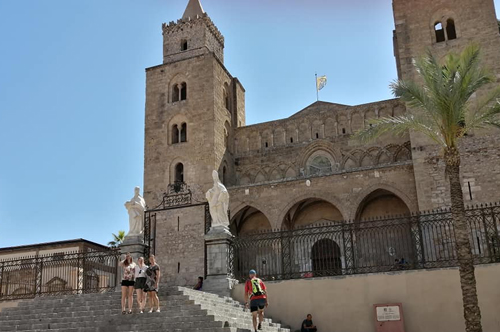
Arab-Norman Palermo and the Cathedral Churches of Cefalú and Monreale
Located on the northern coast of Sicily, Arab-Norman Palermo includes a series of nine civil and religious structures dating from the era of the Norman kingdom of Sicily (1130-1194): two palaces, three churches, a cathedral, a bridge, as well as the cathedrals of Cefalú and Monreale. Collectively, they are an example of a social-cultural syncretism between Western, Islamic and Byzantine cultures on the island which gave rise to new concepts of space, structure and decoration. They also bear testimony to the fruitful coexistence of people of different origins and religions (Muslim, Byzantine, Latin, Jewish, Lombard and French).
Archaeological Area and the Patriarchal Basilica of Aquileia
Located on the northern coast of Sicily, Arab-Norman Palermo includes a series of nine civil and religious structures dating from the era of the Norman kingdom of Sicily (1130-1194): two palaces, three churches, a cathedral, a bridge, as well as the cathedrals of Cefalú and Monreale. Collectively, they are an example of a social-cultural syncretism between Western, Islamic and Byzantine cultures on the island which gave rise to new concepts of space, structure and decoration. They also bear testimony to the fruitful coexistence of people of different origins and religions (Muslim, Byzantine, Latin, Jewish, Lombard and French).
Archaeological Area of Agrigento
Founded as a Greek colony in the 6th century B.C., Agrigento became one of the leading cities in the Mediterranean world. Its supremacy and pride are demonstrated by the remains of the magnificent Doric temples that dominate the ancient town, much of which still lies intact under today's fields and orchards. Selected excavated areas throw light on the later Hellenistic and Roman town and the burial practices of its early Christian inhabitants.
Archaeological Areas of Pompei, Herculaneum and Torre Annunziata
When Vesuvius erupted on 24 August AD 79, it engulfed the two flourishing Roman towns of Pompei and Herculaneum, as well as the many wealthy villas in the area. These have been progressively excavated and made accessible to the public since the mid-18th century. The vast expanse of the commercial town of Pompei contrasts with the smaller but better-preserved remains of the holiday resort of Herculaneum, while the superb wall paintings of the Villa Oplontis at Torre Annunziata give a vivid impression of the opulent lifestyle enjoyed by the wealthier citizens of the Early Roman Empire.
Assisi, the Basilica of San Francesco and Other Franciscan Sites
Assisi, a medieval city built on a hill, is the birthplace of Saint Francis, closely associated with the work of the Franciscan Order. Its medieval art masterpieces, such as the Basilica of San Francesco and paintings by Cimabue, Pietro Lorenzetti, Simone Martini and Giotto, have made Assisi a fundamental reference point for the development of Italian and European art and architecture.
Botanical Garden (Orto Botanico) in Padua
The world's first botanical garden was created in Padua in 1545. It still preserves its original layout – a circular central plot, symbolizing the world, surrounded by a ring of water. Other elements were added later, some architectural (ornamental entrances and balustrades) and some practical (pumping installations and greenhouses). It continues to serve its original purpose as a centre for scientific research.
Castel del Monte
When the Emperor Frederick II built this castle near Bari in the 13th century, he imbued it with symbolic significance, as reflected in the location, the mathematical and astronomical precision of the layout and the perfectly regular shape. A unique piece of medieval military architecture, Castel del Monte is a successful blend of elements from classical antiquity, the Islamic Orient and north European Cistercian Gothic.
Cathedral, Torre Civica and Piazza Grande in Modena
The world's first botanical garden was created in Padua in 1545. It still preserves its original layout – a circular central plot, symbolizing the world, surrounded by a ring of water. Other elements were added later, some architectural (ornamental entrances and balustrades) and some practical (pumping installations and greenhouses). It continues to serve its original purpose as a centre for scientific research.
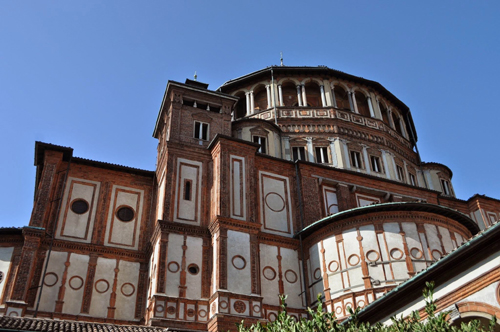
Photo by Camille Loiseau
Church and Dominican Convent of Santa Maria delle Grazie with “The Last Supper” by Leonardo da Vinci
The refectory of the Convent of Santa Maria delle Grazie forms an integral part of this architectural complex, begun in Milan in 1463 and reworked at the end of the 15th century by Bramante. On the north wall is The Last Supper, the unrivalled masterpiece painted between 1495 and 1497 by Leonardo da Vinci, whose work was to herald a new era in the history of art.
Cilento and Vallo di Diano National Park with the Archeological Sites of Paestum and Velia, and the Certosa di Padula
The Cilento is an outstanding cultural landscape. The dramatic groups of sanctuaries and settlements along its three east–west mountain ridges vividly portray the area's historical evolution: it was a major route not only for trade, but also for cultural and political interaction during the prehistoric and medieval periods. The Cilento was also the boundary between the Greek colonies of Magna Graecia and the indigenous Etruscan and Lucanian peoples. The remains of two major cities from classical times, Paestum and Velia, are found there.
City of Verona
The historic city of Verona was founded in the 1st century B.C. It particularly flourished under the rule of the Scaliger family in the 13th and 14th centuries and as part of the Republic of Venice from the 15th to 18th centuries. Verona has preserved a remarkable number of monuments from antiquity, the medieval and Renaissance periods, and represents an outstanding example of a military stronghold.
City of Vicenza and the Palladian Villas of the Veneto
The historic city of Verona was founded in the 1st century B.C. It particularly flourished under the rule of the Scaliger family in the 13th and 14th centuries and as part of the Republic of Venice from the 15th to 18th centuries. Verona has preserved a remarkable number of monuments from antiquity, the medieval and Renaissance periods, and represents an outstanding example of a military stronghold.
Costiera Amalfitana
The Amalfi coast is an area of great physical beauty and natural diversity. It has been intensively settled by human communities since the early Middle Ages. There are a number of towns such as Amalfi and Ravello with architectural and artistic works of great significance. The rural areas show the versatility of the inhabitants in adapting their use of the land to the diverse nature of the terrain, which ranges from terraced vineyards and orchards on the lower slopes to wide upland pastures.
Crespi d'Adda
Crespi d'Adda in Capriate San Gervasio in Lombardy is an outstanding example of the 19th- and early 20th-century 'company towns' built in Europe and North America by enlightened industrialists to meet the workers' needs. The site is still remarkably intact and is partly used for industrial purposes, although changing economic and social conditions now threaten its survival.
Early Christian Monuments of Ravenna
Ravenna was the seat of the Roman Empire in the 5th century and then of Byzantine Italy until the 8th century. It has a unique collection of early Christian mosaics and monuments. All eight buildings – the Mausoleum of Galla Placidia, the Neonian Baptistery, the Basilica of Sant'Apollinare Nuovo, the Arian Baptistery, the Archiepiscopal Chapel, the Mausoleum of Theodoric, the Church of San Vitale and the Basilica of Sant'Apollinare in Classe – were constructed in the 5th and 6th centuries. They show great artistic skill, including a wonderful blend of Graeco-Roman tradition, Christian iconography and oriental and Western styles.
Etruscan Necropolises of Cerveteri and Tarquinia
These two large Etruscan cemeteries reflect different types of burial practices from the 9th to the 1st century BC, and bear witness to the achievements of Etruscan culture. Which over nine centuries developed the earliest urban civilization in the northern Mediterranean. Some of the tombs are monumental, cut in rock and topped by impressive tumuli (burial mounds). Many feature carvings on their walls, others have wall paintings of outstanding quality. The necropolis near Cerveteri, known as Banditaccia, contains thousands of tombs organized in a city-like plan, with streets, small squares and neighbourhoods. The site contains very different types of tombs: trenches cut in rock; tumuli; and some, also carved in rock, in the shape of huts or houses with a wealth of structural details. These provide the only surviving evidence of Etruscan residential architecture. The necropolis of Tarquinia, also known as Monterozzi, contains 6,000 graves cut in the rock. It is famous for its 200 painted tombs, the earliest of which date from the 7th century BC.
Ferrara, City of the Renaissance, and its Po Delta
Ferrara, which grew up around a ford over the River Po, became an intellectual and artistic centre that attracted the greatest minds of the Italian Renaissance in the 15th and 16th centuries. Here, Piero della Francesca, Jacopo Bellini and Andrea Mantegna decorated the palaces of the House of Este. The humanist concept of the 'ideal city' came to life here in the neighbourhoods built from 1492 onwards by Biagio Rossetti according to the new principles of perspective. The completion of this project marked the birth of modern town planning and influenced its subsequent development.
Genoa: Le Strade Nuove and the system of the Palazzi dei Rolli
The Strade Nuove and the system of the Palazzi dei Rolli in Genoa’s historic centre date from the late 16th and early 17th centuries when the Republic of Genoa was at the height of its financial and seafaring power. The site represents the first example in Europe of an urban development project parcelled out by a public authority within a unitary framework and associated to a particular system of ‘public lodging’ in private residences, as decreed by the Senate in 1576. The site includes an ensemble of Renaissance and Baroque palaces along the so-called ‘new streets’ (Strade Nuove). The Palazzi dei Rolli offer an extraordinary variety of different solutions, achieving universal value in adapting to the particular characteristics of the site and to the requirements of a specific social and economic organization. They also offer an original example of a public network of private residences designated to host state visits.
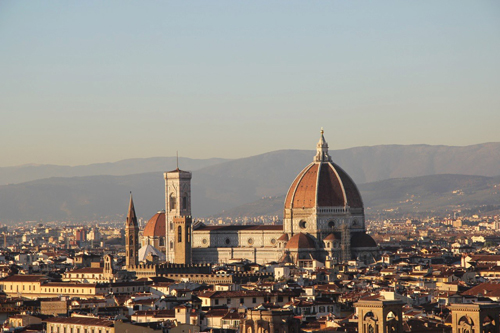
Historic Centre of Florence
Built on the site of an Etruscan settlement, Florence, the symbol of the Renaissance, rose to economic and cultural pre-eminence under the Medici in the 15th and 16th centuries. Its 600 years of extraordinary artistic activity can be seen above all in the 13th-century cathedral (Santa Maria del Fiore), the Church of Santa Croce, the Uffizi and the Pitti Palace, the work of great masters such as Giotto, Brunelleschi, Botticelli and Michelangelo.
Historic Centre of Naples
Built on the site of an Etruscan settlement, Florence, the symbol of the Renaissance, rose to economic and cultural pre-eminence under the Medici in the 15th and 16th centuries. Its 600 years of extraordinary artistic activity can be seen above all in the 13th-century cathedral (Santa Maria del Fiore), the Church of Santa Croce, the Uffizi and the Pitti Palace, the work of great masters such as Giotto, Brunelleschi, Botticelli and Michelangelo.

Photo by Camille Loiseau
Historic Centre of Rome, the Properties of the Holy See in that City Enjoying Extraterritorial Rights and San Paolo Fuori le Mura
Founded, according to legend, by Romulus and Remus in 753 BC, Rome was first the centre of the Roman Republic, then of the Roman Empire, and it became the capital of the Christian world in the 4th century. The World Heritage site, extended in 1990 to the walls of Urban VIII, includes some of the major monuments of antiquity such as the Forums, the Mausoleum of Augustus, the Mausoleum of Hadrian, the Pantheon, Trajan’s Column and the Column of Marcus Aurelius, as well as the religious and public buildings of papal Rome.
Historic Centre of San Gimignano
'San Gimignano delle belle Torri' is in Tuscany, 56 km south of Florence. It served as an important relay point for pilgrims travelling to or from Rome on the Via Francigena. The patrician families who controlled the town built around 72 tower-houses (some as high as 50 m) as symbols of their wealth and power. Although only 14 have survived, San Gimignano has retained its feudal atmosphere and appearance. The town also has several masterpieces of 14th- and 15th-century Italian art.
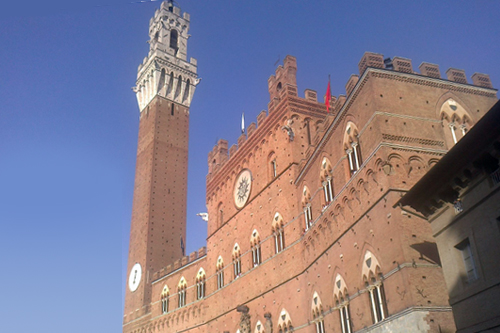
Historic Centre of Siena
Siena is the embodiment of a medieval city. Its inhabitants pursued their rivalry with Florence right into the area of urban planning. Throughout the centuries, they preserved their city's Gothic appearance, acquired between the 12th and 15th centuries. During this period the work of Duccio, the Lorenzetti brothers and Simone Martini was to influence the course of Italian and, more broadly, European art. The whole city of Siena, built around the Piazza del Campo, was devised as a work of art that blends into the surrounding landscape.
Historic Centre of the City of Pienza
It was in this Tuscan town that Renaissance town-planning concepts were first put into practice after Pope Pius II decided, in 1459, to transform the look of his birthplace. He chose the architect Bernardo Rossellino, who applied the principles of his mentor, Leon Battista Alberti. This new vision of urban space was realized in the superb square known as Piazza Pio II and the buildings around it: the Piccolomini Palace, the Borgia Palace and the cathedral with its pure Renaissance exterior and an interior in the late Gothic style of south German churches.
Historic Centre of Urbino
The small hill town of Urbino, in the Marche, experienced a great cultural flowering in the 15th century, attracting artists and scholars from all over Italy and beyond, and influencing cultural developments elsewhere in Europe. Owing to its economic and cultural stagnation from the 16th century onwards, it has preserved its Renaissance appearance to a remarkable extent.
Ivrea, industrial city of the 20th century
The industrial city of Ivrea is located in the Piedmont region and developed as the testing ground for Olivetti, manufacturer of typewriters, mechanical calculators and office computers. It comprises a large factory and buildings designed to serve the administration and social services, as well as residential units. Designed by leading Italian urban planners and architects, mostly between the 1930s and the 1960s, this architectural ensemble reflects the ideas of the Community Movement (Movimento Comunità). A model social project, Ivrea expresses a modern vision of the relationship between industrial production and architecture.
Late Baroque Towns of the Val di Noto (South-Eastern Sicily)
The eight towns in south-eastern Sicily: Caltagirone, Militello Val di Catania, Catania, Modica, Noto, Palazzolo, Ragusa and Scicli, were all rebuilt after 1693 on or beside towns existing at the time of the earthquake which took place in that year. They represent a considerable collective undertaking, successfully carried out at a high level of architectural and artistic achievement. Keeping within the late Baroque style of the day, they also depict distinctive innovations in town planning and urban building.
Le Colline del Prosecco di Conegliano e Valdobbiadene
Located in north-eastern Italy, the property includes part of the winegrowing landscape of the Prosecco wine production area. The landscape is characterized by ‘hogback’ hills, ciglioni – small plots of vines on narrow grassy terraces – forests, small villages and farmland. For centuries, this rugged terrain has been shaped and adapted by man. Since the 17th century, the use of ciglioni has created a particular chequerboard landscape consisting of rows of vines parallel and vertical to the slopes. In the 19th century, the bellussera technique of training the vines contributed to the aesthetic characteristics of the landscape.
Longobards in Italy - Places of the Power (568-774 A.D.)
The Longobards in Italy, Places of Power, 568 - 774 A.D. comprises seven groups of important buildings (including fortresses, churches, and monasteries) throughout the Italian Peninsula. They testify to the high achievement of the Lombards, who migrated from northern Europe and developed their own specific culture in Italy where they ruled over vast territories in the 6th to 8th centuries. The Lombards synthesis of architectural styles marked the transition from Antiquity to the European Middle Ages, drawing on the heritage of Ancient Rome, Christian spirituality, Byzantine influence and Germanic northern Europe. The serial property testifies to the Lombards' major role in the spiritual and cultural development of Medieval European Christianity, notably by bolstering the monastic movement.
Mantua and Sabbioneta
Mantua and Sabbioneta represent two aspects of Renaissance town planning: Mantua shows the renewal and extension of an existing city, while some 30 km away, Sabbioneta represents the implementation of the period’s theories about planning the ideal city. Typically, Mantua’s layout is irregular with regular parts showing different stages of its growth since the Roman period and includes many historical buildings, among them an 11th century rotunda and a Baroque theatre. Sabbioneta, created in the second half of the 16th century under the rule of Vespasiano Gonzaga Colonna, can be described as a single-period city and has a right-angle grid layout. Both cities offer exceptional testimonies to the urban, architectural and artistic realizations of the Renaissance, linked through the visions and actions of the ruling Gonzaga family. The two towns are important for the value of their architecture and for their prominent role in the dissemination of Renaissance culture. The ideals of the Renaissance, fostered by the Gonzaga family, are present in the towns’ morphology and architecture.
Medici Villas and Gardens in Tuscany
Twelve villas and two gardens spread across the Tuscan landscape make up this site which bears testimony to the influence the Medici family exerted over modern European culture through its patronage of the arts. Built between the 15th and 17th centuries, they represent an innovative system of construction in harmony with nature and dedicated to leisure, the arts and knowledge. The villas embody an innovative form and function, a new type of princely residence that differed from both the farms owned by rich Florentines of the period and from the military might of baronial castles. The Medici villas form the first example of the connection between architecture, gardens, and the environment and became an enduring reference for princely residences throughout Italy and Europe. Their gardens and integration into the natural environment helped develop the appreciation of landscape characteristic Humanism and the Renaissance.
Padua’s fourteenth-century fresco cycles
This property is composed of eight religious and secular building complexes, within the historic walled city of Padua, which house a selection of fresco cycles painted between 1302 and 1397 by different artists for different types of patron and within buildings of diverse functions. Nevertheless, the frescos maintain a unity of style and content. They include Giotto’s Scrovegni Chapel fresco cycle, considered to have marked the beginning of a revolutionary development in the history of mural painting, as well as other fresco cycles of different artists, namely Guariento di Arpo, Giusto de’ Menabuoi, Altichiero da Zevio, Jacopo Avanzi and Jacopo da Verona. As a group, these fresco cycles illustrate how, over the course of a century, fresco art developed along a new creative impetus and understanding of spatial representation.
Piazza del Duomo in Pisa
Standing in a large green expanse, Piazza del Duomo houses a group of monuments known the world over. These four masterpieces of medieval architecture – the cathedral, the baptistry, the campanile (the 'Leaning Tower') and the cemetery – had a great influence on monumental art in Italy from the 11th to the 14th century.
Portovenere, Cinque Terre, and the Islands (Palmaria, Tino and Tinetto)
The Ligurian coast between Cinque Terre and Portovenere is a cultural landscape of great scenic and cultural value. The layout and disposition of the small towns and the shaping of the surrounding landscape, overcoming the disadvantages of a steep, uneven terrain, encapsulate the continuous history of human settlement in this region over the past millennium.
Prehistoric Pile Dwellings around the Alps
This serial property of 111 small individual sites encompasses the remains of prehistoric pile-dwelling (or stilt house) settlements in and around the Alps built from around 5000 to 500 B.C. on the edges of lakes, rivers or wetlands. Excavations, only conducted in some of the sites, have yielded evidence that provides insight into life in prehistoric times during the Neolithic and Bronze Age in Alpine Europe and the way communities interacted with their environment. Fifty-six of the sites are located in Switzerland. The settlements are a unique group of exceptionally well-preserved and culturally rich archaeological sites, which constitute one of the most important sources for the study of early agrarian societies in the region.
Residences of the Royal House of Savoy
When Emmanuel-Philibert, Duke of Savoy, moved his capital to Turin in 1562, he began a vast series of building projects (continued by his successors) to demonstrate the power of the ruling house. This outstanding complex of buildings, designed and embellished by the leading architects and artists of the time, radiates out into the surrounding countryside from the Royal Palace in the 'Command Area' of Turin to include many country residences and hunting lodges.
Rhaetian Railway in the Albula / Bernina Landscapes
Rhaetian Railway in the Albula / Bernina Landscapes, brings together two historic railway lines that cross the Swiss Alps through two passes. Opened in 1904, the Albula line in the north western part of the property is 67 km long. It features an impressive set of structures including 42 tunnels and covered galleries and 144 viaducts and bridges. The 61 km Bernina pass line features 13 tunnels and galleries and 52 viaducts and bridges. The property is exemplary of the use of the railway to overcome the isolation of settlements in the Central Alps early in the 20th century, with a major and lasting socio-economic impact on life in the mountains. It constitutes an outstanding technical, architectural and environmental ensemble and embodies architectural and civil engineering achievements, in harmony with the landscapes through which they pass.
Rock Drawings in Valcamonica
Valcamonica, situated in the Lombardy plain, has one of the world's greatest collections of prehistoric petroglyphs – more than 140,000 symbols and figures carved in the rock over a period of 8,000 years and depicting themes connected with agriculture, navigation, war and magic.
Su Nuraxi di Barumini
During the late 2nd millennium B.C. in the Bronze Age, a special type of defensive structure known as nuraghi (for which no parallel exists anywhere else in the world) developed on the island of Sardinia. The complex consists of circular defensive towers in the form of truncated cones built of dressed stone, with corbel-vaulted internal chambers. The complex at Barumini, which was extended and reinforced in the first half of the 1st millennium under Carthaginian pressure, is the finest and most complete example of this remarkable form of prehistoric architecture.
Syracuse and the Rocky Necropolis of Pantalica
The site consists of two separate elements, containing outstanding vestiges dating back to Greek and Roman times: The Necropolis of Pantalica contains over 5,000 tombs cut into the rock near open stone quarries, most of them dating from the 13th to 7th centuries BC. Vestiges of the Byzantine era also remain in the area, notably the foundations of the Anaktoron (Prince’s Palace). The other part of the property, Ancient Syracuse, includes the nucleus of the city’s foundation as Ortygia by Greeks from Corinth in the 8th century BC. The site of the city, which Cicero described as ‘the greatest Greek city and the most beautiful of all’, retains vestiges such as the Temple of Athena (5th century BC, later transformed to serve as a cathedral), a Greek theatre, a Roman amphitheatre, a fort and more. Many remains bear witness to the troubled history of Sicily, from the Byzantines to the Bourbons, interspersed with the Arabo-Muslims, the Normans, Frederick II of the Hohenstaufen dynasty (1197–1250), the Aragons and the Kingdom of the Two Sicilies. Historic Syracuse offers a unique testimony to the development of Mediterranean civilization over three millennia.
The Trulli of Alberobello
The trulli , limestone dwellings found in the southern region of Puglia, are remarkable examples of drywall (mortarless) construction, a prehistoric building technique still in use in this region. The trulli are made of roughly worked limestone boulders collected from neighbouring fields. Characteristically, they feature pyramidal, domed or conical roofs built up of corbelled limestone slabs.
The Great Spa Towns of Europe
This transnational serial property comprises eleven spa towns, located in seven European countries: Baden bei Wien (Austria); Spa (Belgium); Frantis?kovy La´zne?; Karlovy Vary; Maria´nske´ La´zne? (Czechia); Vichy (France); Bad Ems; Baden-Baden; Bad Kissingen (Germany); Montecatini Terme (Italy); and City of Bath (United Kingdom). All of these towns developed around natural mineral water springs. They bear witness to the international European spa culture that developed from the early 18th century to the 1930s, leading to the emergence of grand international resorts that impacted urban typology around ensembles of spa buildings such as baths, kurhaus and kursaal (buildings and rooms dedicated to therapy), pump rooms, drinking halls, colonnades and galleries designed to harness the natural mineral water resources and to allow their practical use for bathing and drinking. Related facilities include gardens, assembly rooms, casinos, theatres, hotels and villas, as well as spa-specific support infrastructure. These ensembles are all integrated into an overall urban context that includes a carefully managed recreational and therapeutic environment in a picturesque landscape. Together, these sites embody the significant interchange of human values and developments in medicine, science and balneology.
The Porticoes of Bologna
The serial property comprises twelve component parts consisting of ensembles of porticoes and their surrounding built areas, located within the Municipality of Bologna from the 12th century to the present. These portico ensembles are considered to be the most representative among city’s porticoes, which cover a total stretch of 62 km. Some of the porticoes are built of wood, others of stone or brick, as well as reinforced concrete, covering roads, squares, paths and walkways, either on one or both sides of a street. The property includes porticoed buildings that do not form a structural continuum with other buildings and therefore are not part of a comprehensive covered walkway or passage. The porticoes are appreciated as sheltered walkways and prime locations for merchant activities. In the 20th century, the use of concrete allowed the replacement of the traditional vaulted arcades with new building possibilities and a new architectural language for the porticoes emerged, as exemplified in the Barca district. Together, the selected porticoes reflect different typologies, urban and social functions and chronological phases. Defined as private property for public use, the porticoes have become an expression and element of Bologna’s urban identity.
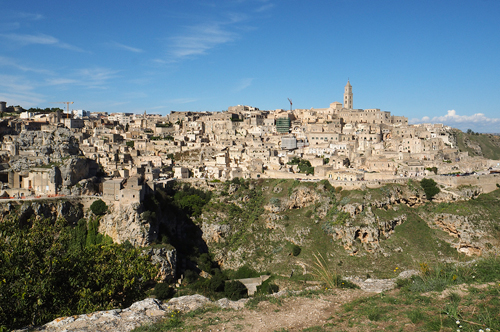
The Sassi and the Park of the Rupestrian Churches of Matera
This is the most outstanding, intact example of a troglodyte settlement in the Mediterranean region, perfectly adapted to its terrain and ecosystem. The first inhabited zone dates from the Palaeolithic, while later settlements illustrate a number of significant stages in human history. Matera is in the southern region of Basilicata.
Val d'Orcia
The landscape of Val d’Orcia is part of the agricultural hinterland of Siena, redrawn and developed when it was integrated in the territory of the city-state in the 14th and 15th centuries to reflect an idealized model of good governance and to create an aesthetically pleasing picture. The landscape’s distinctive aesthetics, flat chalk plains out of which rise almost conical hills with fortified settlements on top, inspired many artists. Their images have come to exemplify the beauty of well-managed Renaissance agricultural landscapes. The inscription covers: an agrarian and pastoral landscape reflecting innovative land-management systems; towns and villages; farmhouses; and the Roman Via Francigena and its associated abbeys, inns, shrines, bridges, etc.

Photo by Camille Loiseau
Venetian Works of Defence between the 16th and 17th Centuries: Stato da Terra – Western Stato da Mar
This property consists of 6 components of defence works in Italy, Croatia and Montenegro, spanning more than 1,000 km between the Lombard region of Italy and the eastern Adriatic Coast. The fortifications throughout the Stato da Terra protected the Republic of Venice from other European powers to the northwest and those of the Stato da Mar protected the sea routes and ports in the Adriatic Sea to the Levant. They were necessary to support the expansion and authority of the Serenissima. The introduction of gunpowder led to significant shifts in military techniques and architecture that are reflected in the design of so-called alla moderna / bastioned, fortifications, which were to spread throughout Europe.

Photo by Camille Loiseau
Venice and its Lagoon
Founded in the 5th century and spread over 118 small islands, Venice became a major maritime power in the 10th century. The whole city is an extraordinary architectural masterpiece in which even the smallest building contains works by some of the world's greatest artists such as Giorgione, Titian, Tintoretto, Veronese and others.
Villa Adriana in Tivoli
The Villa Adriana (at Tivoli, near Rome) is an exceptional complex of classical buildings created in the 2nd century A.D. by the Roman emperor Hadrian. It combines the best elements of the architectural heritage of Egypt, Greece and Rome in the form of an 'ideal city'.
Villa d'Este in Tivoli
The Villa d'Este in Tivoli, with its palace and garden, is one of the most remarkable and comprehensive illustrations of Renaissance culture at its most refined. Its innovative design along with the architectural components in the garden (fountains, ornamental basins, etc.) make this a unique example of an Italian 16th-century garden. The Villa d'Este, one of the first giardini delle meraviglie , was an early model for the development of European gardens.
Villa Romana del Casale
Roman exploitation of the countryside is symbolized by the Villa Romana del Casale (in Sicily), the centre of the large estate upon which the rural economy of the Western Empire was based. The villa is one of the most luxurious of its kind. It is especially noteworthy for the richness and quality of the mosaics which decorate almost every room; they are the finest mosaics in situ anywhere in the Roman world.
Vineyard Landscape of Piedmont: Langhe-Roero and Monferrato
This landscape covers five distinct wine-growing areas with outstanding landscapes and the Castle of Cavour, an emblematic name both in the development of vineyards and in Italian history. It is located in the southern part of Piedmont, between the Po River and the Ligurian Apennines, and encompasses the whole range of technical and economic processes relating to the winegrowing and winemaking that has characterized the region for centuries. Vine pollen has been found in the area dating from the 5th century BC, when Piedmont was a place of contact and trade between the Etruscans and the Celts; Etruscan and Celtic words, particularly wine-related ones, are still found in the local dialect. During the Roman Empire, Pliny the Elder mentions the Piedmont region as being one of the most favourable for growing vines in ancient Italy; Strabo mentions its barrels.
Ancient and Primeval Beech Forests of the Carpathians and Other Regions of Europe
This transnational property includes 94 component parts in 18 countries. Since the end of the last Ice Age, European Beech spread from a few isolated refuge areas in the Alps, Carpathians, Dinarides, Mediterranean and Pyrenees over a short period of a few thousand years in a process that is still ongoing. The successful expansion across a whole continent is related to the tree’s adaptability and tolerance of different climatic, geographical and physical conditions.
Isole Eolie (Aeolian Islands)
The Aeolian Islands provide an outstanding record of volcanic island-building and destruction, and ongoing volcanic phenomena. Studied since at least the 18th century, the islands have provided the science of vulcanology with examples of two types of eruption (Vulcanian and Strombolian) and thus have featured prominently in the education of geologists for more than 200 years. The site continues to enrich the field of vulcanology.
Monte San Giorgio
The pyramid-shaped, wooded mountain of Monte San Giorgio beside Lake Lugano is regarded as the best fossil record of marine life from the Triassic Period (245–230 million years ago). The sequence records life in a tropical lagoon environment, sheltered and partially separated from the open sea by an offshore reef. Diverse marine life flourished within this lagoon, including reptiles, fish, bivalves, ammonites, echinoderms and crustaceans. Because the lagoon was near land, the remains also include land-based fossils of reptiles, insects and plants, resulting in an extremely rich source of fossils.
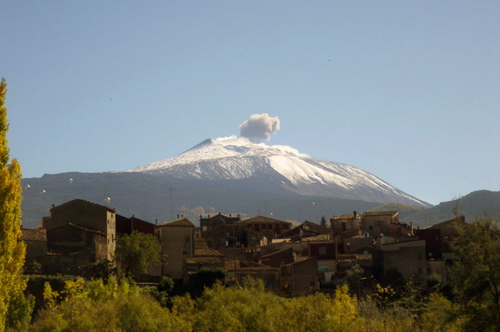
Mount Etna
Mount Etna is an iconic site encompassing 19,237 uninhabited hectares on the highest part of Mount Etna, on the eastern coast of Sicily. Mount Etna is the highest Mediterranean island mountain and the most active stratovolcano in the world. The eruptive history of the volcano can be traced back 500,000 years and at least 2,700 years of this activity has been documented. The almost continuous eruptive activity of Mount Etna continues to influence volcanology, geophysics and other Earth science disciplines. The volcano also supports important terrestrial ecosystems including endemic flora and fauna and its activity makes it a natural laboratory for the study of ecological and biological processes. The diverse and accessible range of volcanic features such as summit craters, cinder cones, lava flows and the Valle de Bove depression have made the site a prime destination for research and education.
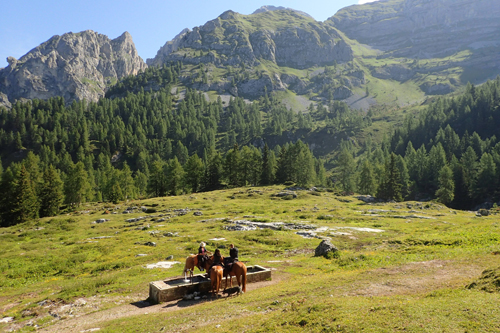
The Dolomites
The site of the Dolomites comprises a mountain range in the northern Italian Alps, numbering 18 peaks which rise to above 3,000 metres and cover 141,903 ha. It features some of the most beautiful mountain landscapes anywhere, with vertical walls, sheer cliffs and a high density of narrow, deep and long valleys. A serial property of nine areas that present a diversity of spectacular landscapes of international significance for geomorphology marked by steeples, pinnacles and rock walls, the site also contains glacial landforms and karst systems. It is characterized by dynamic processes with frequent landslides, floods and avalanches. The property also features one of the best examples of the preservation of Mesozoic carbonate platform systems, with fossil records.
Source: https://whc.unesco.org/en/statesparties/it
|
|

|
|
|
|